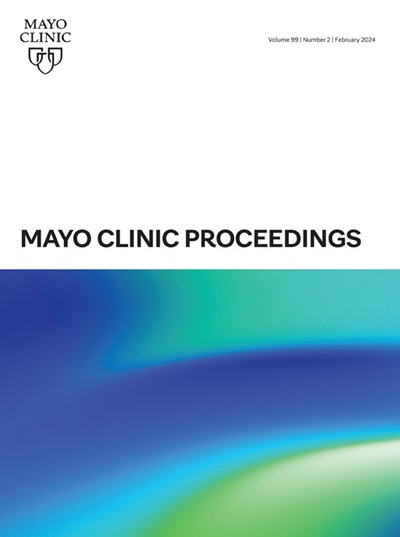加利福尼亚心血管疾病死亡率趋势:性别-种族/族裔差异和收入不平等。
IF 6.9
2区 医学
Q1 MEDICINE, GENERAL & INTERNAL
引用次数: 0
摘要
目标:研究 1999 年 1 月 1 日至 2021 年 12 月 31 日期间加利福尼亚州与心血管疾病(CVD)相关的死亡趋势以及 CVD 死亡与性别、种族/民族和收入之间的关系:我们使用疾病控制与预防中心的 WONDER(疾病控制与预防中心用于流行病学研究的广泛在线数据)计算了 1999 年至 2021 年加利福尼亚州每 10 万人口因缺血性心脏病 (IHD)、高血压性心脏病 (HHD) 和心力衰竭 (HF)、中风和心血管疾病的年龄调整后死亡率 (AADR)。我们使用连接点对数线性回归模型来确定心血管疾病的死亡趋势。使用不平等斜率指数和健康集中指数评估了收入差距:1999年至2021年期间,心血管疾病总死亡率显著下降(年均百分比变化率为-2.2% [95%置信区间:-2.6%,-1.7%])、心肌缺血(IHD)(-3.7% [-4.3%,-3.1%])和中风(-2.0% [-2.8%,-1.2%]),而心肌缺血(HHD)(2.0% [0.6%,3.5%])和高血压(HF)(2.0% [1.3%,2.7%])总死亡率上升。合并心血管疾病的 AADR 首次显著下降(1999-2014 年;所有 PC 结论:所有正在下降的死亡率都在下降:所有在 COVID-19 大流行前下降、停滞或上升的死亡率在大流行后都有所上升。我们发现贫困人口和少数种族/族裔人口的不良后果越来越严重。本文章由计算机程序翻译,如有差异,请以英文原文为准。
Trends in California Cardiovascular Disease Mortality: Sex–Race/Ethnicity Disparity and Income Inequality
Objective
To examine the cardiovascular disease (CVD)–related death trends and the relationship between CVD deaths and sex, race/ethnicity, and income in California from January 1, 1999, to December 31, 2021.
Methods
The age-adjusted death rate (AADR) per 100,000 population attributable to ischemic heart disease (IHD), hypertensive heart disease (HHD) and heart failure (HF), stroke, and CVD combined were calculated using CDC WONDER (Centers for Disease Control and Prevention's Wide-Ranging Online Data for Epidemiologic Research) for California, 1999 to 2021. We used a joinpoint log-linear regression model to determine trends in CVD death. Income disparities were assessed using the slope index of inequality and health concentration index.
Results
Between 1999 and 2021, overall death rates for CVD decreased significantly (average annual percent change, −2.2% [95% confidence interval: -2.6%, -1.7%]), IHD (−3.7% [-4.3%, -3.1%]), and stroke (−2.0% [-2.8%, -1.2%]) and increased for HHD (2.0% [0.6%, 3.5%]) and HF (2.0% [1.3%, 2.7%]). The AADR of combined CVD first decreased significantly (1999-2014; all P<.001), then increased significantly after COVID-19 (P=.02). The AADR of IHD decreased significantly (1999-2019; all P<.001) and then increased after the COVID-19 pandemic but was not statistically significant (P=.15). The AADR of HHD (2014-2021) and HF (2013-2021) increased significantly (all P<.001), and this increase accelerated after COVID-19. The AADR of stroke decreased (1999-2009), then increased after COVID-19 but was not statistically significant (P=.07). Our results revealed significant disparities with CVD death being disproportionately higher among male, non-Hispanic Black, American Indian or Alaska Native, Native Hawaiian or Pacific Islander, Asian, and poorer populations.
Conclusion
All the death rates that were decreasing, stagnant, or increasing prior to the COVID-19 pandemic increased after the pandemic. We found increasingly adverse outcomes among the poor and racial/ethnic minority populations.
求助全文
通过发布文献求助,成功后即可免费获取论文全文。
去求助
来源期刊

Mayo Clinic proceedings
医学-医学:内科
CiteScore
16.80
自引率
1.10%
发文量
383
审稿时长
37 days
期刊介绍:
Mayo Clinic Proceedings is a premier peer-reviewed clinical journal in general medicine. Sponsored by Mayo Clinic, it is one of the most widely read and highly cited scientific publications for physicians. Since 1926, Mayo Clinic Proceedings has continuously published articles that focus on clinical medicine and support the professional and educational needs of its readers. The journal welcomes submissions from authors worldwide and includes Nobel-prize-winning research in its content. With an Impact Factor of 8.9, Mayo Clinic Proceedings is ranked #20 out of 167 journals in the Medicine, General and Internal category, placing it in the top 12% of these journals. It invites manuscripts on clinical and laboratory medicine, health care policy and economics, medical education and ethics, and related topics.
 求助内容:
求助内容: 应助结果提醒方式:
应助结果提醒方式:


